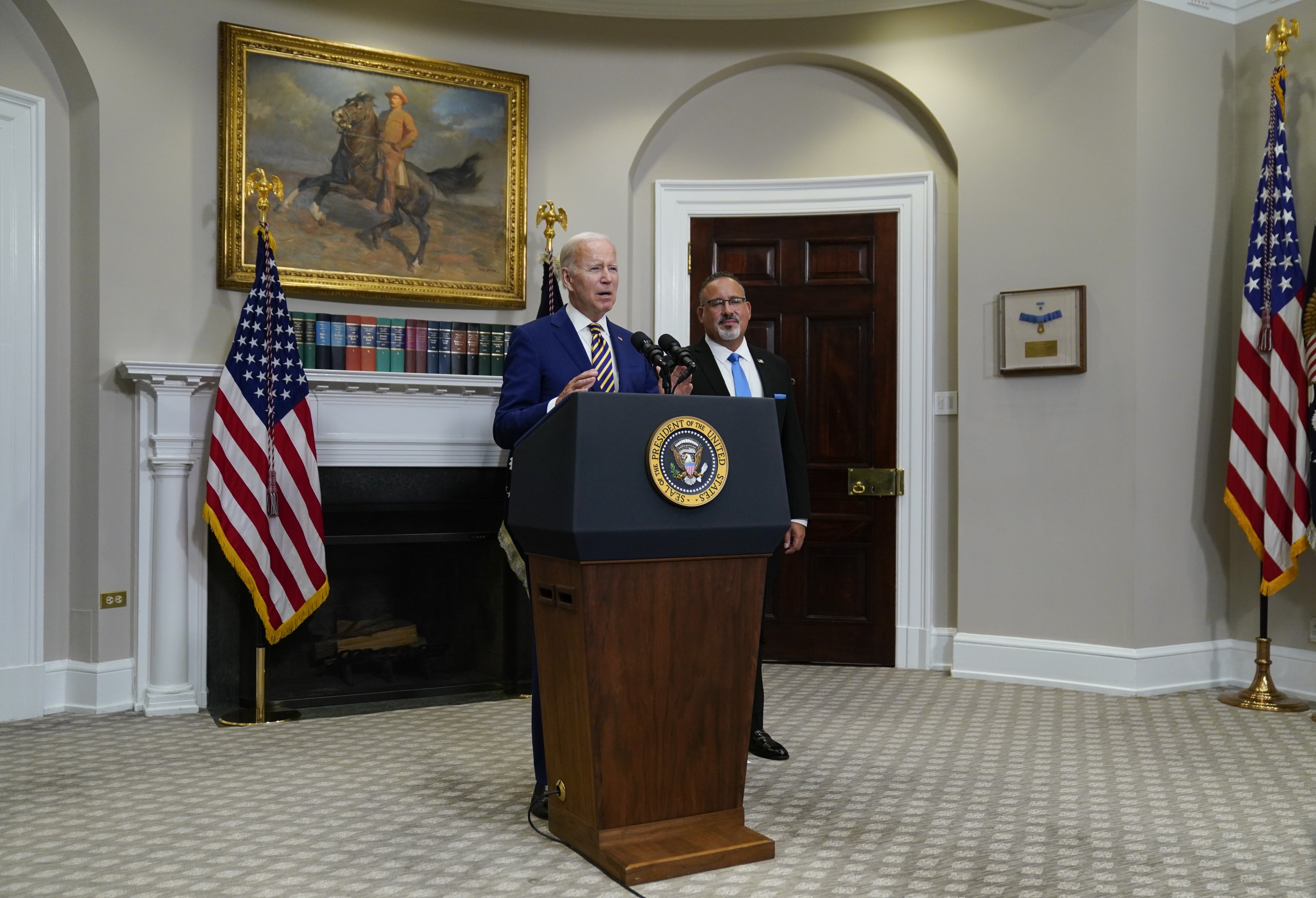© Turkuvaz Haberleşme ve Yayıncılık 2024
U.S. President Joe Biden on Wednesday announced a long-awaited forgiveness plan that could see more than 40 million Americans’ student debt reduced – and in many cases eliminated – a historic but politically divisive move in the run-up to the midterm elections.
Fulfilling a campaign promise, Biden is erasing $10,000 in federal student loan debt for those with incomes below $125,000 a year, or households that earn less than $250,000. He’s canceling an additional $10,000 for those who received federal Pell Grants to attend college.
It’s seen as an unprecedented attempt to stem the tide of America’s rapidly rising student debt, but it doesn’t address the broader issue – the high cost of college.
The move could boost support for Biden’s fellow Democrats in the November congressional elections, but some economists said it may fuel inflation. Republicans quickly denounced the plan as an insult to Americans who have repaid their debt and to those who didn’t attend college.
Critics across the political spectrum also questioned whether Biden has authority for the move, and legal challenges are virtually certain.
Debt forgiveness will free up hundreds of billions of dollars for new consumer spending that could be aimed at homebuying and other big-ticket expenses, according to economists who said this would add a new wrinkle to the country’s inflation fight.
Biden also extended a pause on federal student loan payments for what he called the “final time.” The pause is now set to run through the end of the year, with repayments to restart in January.
These actions are “for families who need it the most: working and middle-class people hit especially hard during the pandemic,” Biden said during remarks at the White House Wednesday afternoon. He pledged no high-income households would benefit, addressing a central criticism of the plan.
“I will never apologize for helping working Americans and middle class, especially not to the same folks who voted for a $2 trillion tax cut that mainly benefited the wealthiest Americans and the biggest corporations,” Biden said, referring to a Republican tax cut passed under former President Donald Trump.

Borrower balances have been frozen since the beginning of the COVID-19 outbreak, with no payments required on most federal student loans since March 2020. Many Democrats had pushed for Biden to forgive as much as $50,000 per borrower.
The cancellation applies to federal student loans used to attend undergraduate and graduate school, along with Parent Plus loans. Current college students qualify if their loans were issued before July 1. For dependent students, their parents’ household income must be below $250,000.
Most people will need to apply for the relief. The Education Department has income data for a small share of borrowers, but the vast majority will need to prove their incomes through an application process. Officials said applications will be available before the end of the year.
Biden’s plan makes 43 million borrowers eligible for some debt forgiveness, with 20 million who could get their debt erased entirely, according to the administration. About 60% of borrowers are recipients of federal Pell Grants, which are reserved for undergraduates with the most significant financial need, meaning more than half can get $20,000 in relief.
A New York Federal Reserve study shows that cutting $10,000 in federal debt for every student would amount to $321 billion and eliminate the entire balance for 11.8 million borrowers, or 31% of them.
Republicans mostly opposed student loan forgiveness, calling it unfair because it will disproportionately help people earning higher incomes.
“President Biden’s student loan socialism is a slap in the face to every family who sacrificed to save for college, every graduate who paid their debt, and every American who chose a certain career path or volunteered to serve in our Armed Forces in order to avoid taking on debt,” Senate Minority Leader Mitch McConnell said Wednesday.
The administration has yet to determine the price tag for the package, which will depend on how many people apply for it, White House domestic policy adviser Susan Rice told reporters.
White House press secretary Karine Jean-Pierre told reporters the administration has legal authority to forgive the debt under a law allowing such action during a national emergency such as a pandemic. Earlier, Republican U.S. Representative Elise Stefanik had called the plan “reckless and illegal.”
American university tuition fees are substantially higher than in most other rich countries, and U.S. consumers carry $1.75 trillion in student loan debt, most of it held by the federal government. Biden said other countries could bypass the United States economically if students are not offered economic relief.
After Dec. 31, the government will resume requiring payment on remaining student loans that were paused during the pandemic. A senior Biden administration official told reporters this would offset any inflationary effects of the forgiveness. Payment resumptions could even have a dampening effect on prices, the official said.
Former U.S. Treasury secretary Larry Summers disagreed. He said on Twitter that debt relief “consumes resources that could be better used helping those who did not, for whatever reason, have the chance to attend college. It will also tend to be inflationary by raising tuitions.”
Similarly, Jason Furman, a Harvard professor who headed the Council of Economic Advisers during the Obama administration, said debt cancellation would nullify the deflationary powers of the Inflation Reduction Act. “Pouring roughly half trillion dollars of gasoline on the inflationary fire that is already burning is reckless,” he said.
Moody’s analytics chief economist Mark Zandi sided with the White House, saying the resumption of billions of dollars per month in student loan payments “will restrain growth and is disinflationary.”
